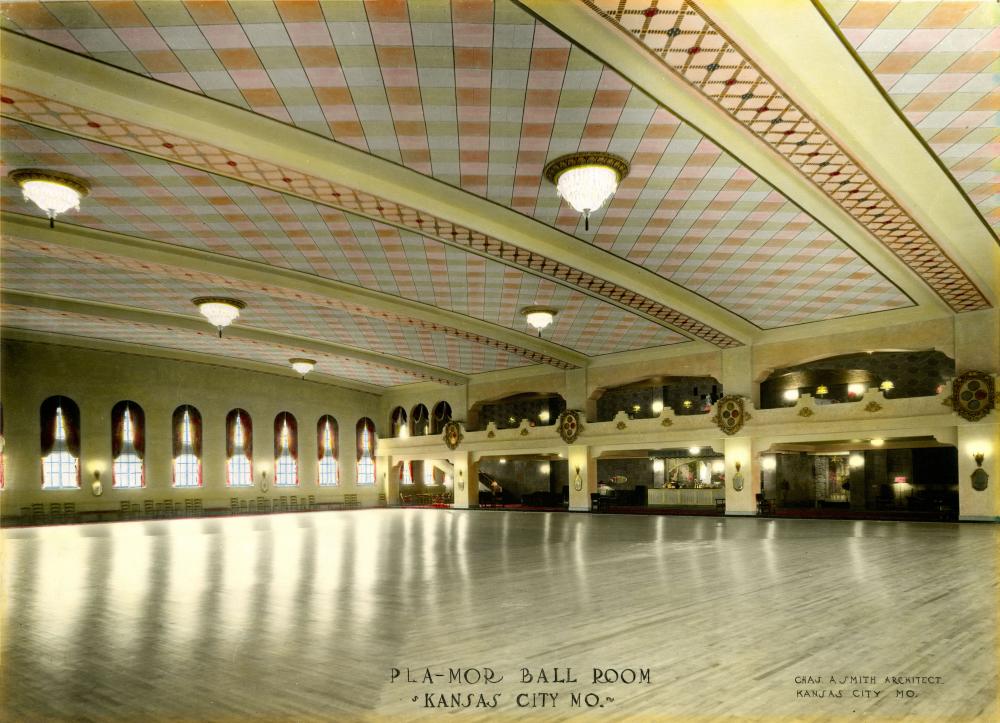Pla-Mor Ballroom

On the evening of November 24, 1927, the Pla-Mor Ballroom opened at 3142 Main Street to a crowd of 4,100 who reveled at its unprecedented size and modern style. The facility followed in the footsteps of the Roseland Ballroom in New York, the Graystone Ballroom in Detroit, and the Aragon Ballroom in Chicago at the height of the Jazz Age of the 1920s.
Paul M. Fogel, the president of the Fogel Construction Company, built the ballroom that would help Kansas City become what ethnomusicologist Nathan W. Pearson describes as the fourth major city of Jazz behind New York, New Orleans, and Chicago. For the design, Fogel hired Charles A. Smith, an architect known for his work on public schools in Kansas City. The facility cost over $500,000, contained a 14,000 square foot dance floor, and held luxuries such as Italian furniture and plush carpet.
On opening night, the ballroom’s multi-colored electric lighting dazzled thousands of dancing patrons who were serenaded by the Jean Goldkette Orchestra. Dancers found an extra bounce in their step because of the 7,000 springs beneath the wooden floor that flexed up to one quarter of an inch. Famous jazz musicians appearing at the ballroom in the subsequent two decades included Tommy and Jimmy Dorsey, Bix Beiderbecke, Frankie Trumbauer, Joe Venuti, Glenn Gray, Vincent Lopez, Larry Clinton, Stan Kenton, and Ella Fitzgerald.

But it was more than just a jazz attraction; it was the largest indoor entertainment complex in America. The lower floors included a bowling alley and billiards. Next door sat an ice skating rink that hosted the Kansas City Greyhounds ice hockey team and an annual Ice Capades show. In 1931, Pla-Mor added the largest swimming pool west of the Mississippi River.
The Pla-Mor maintained its large crowds until changing social mores lessened the attraction of ballroom entertainment and until suburbanization in the 1940s began to draw population from the heart of the city. The ballroom ceased business in 1951, and the other attractions closed in later years. In 1972, the building was razed to make way for a car dealership.
A previous version of this article appears on kchistory.org: http://kchistory.org/week-kansas-city-history/great-indoors
This work is licensed under a Creative Commons Attribution-NonCommercial-NoDerivatives 4.0 International License.
